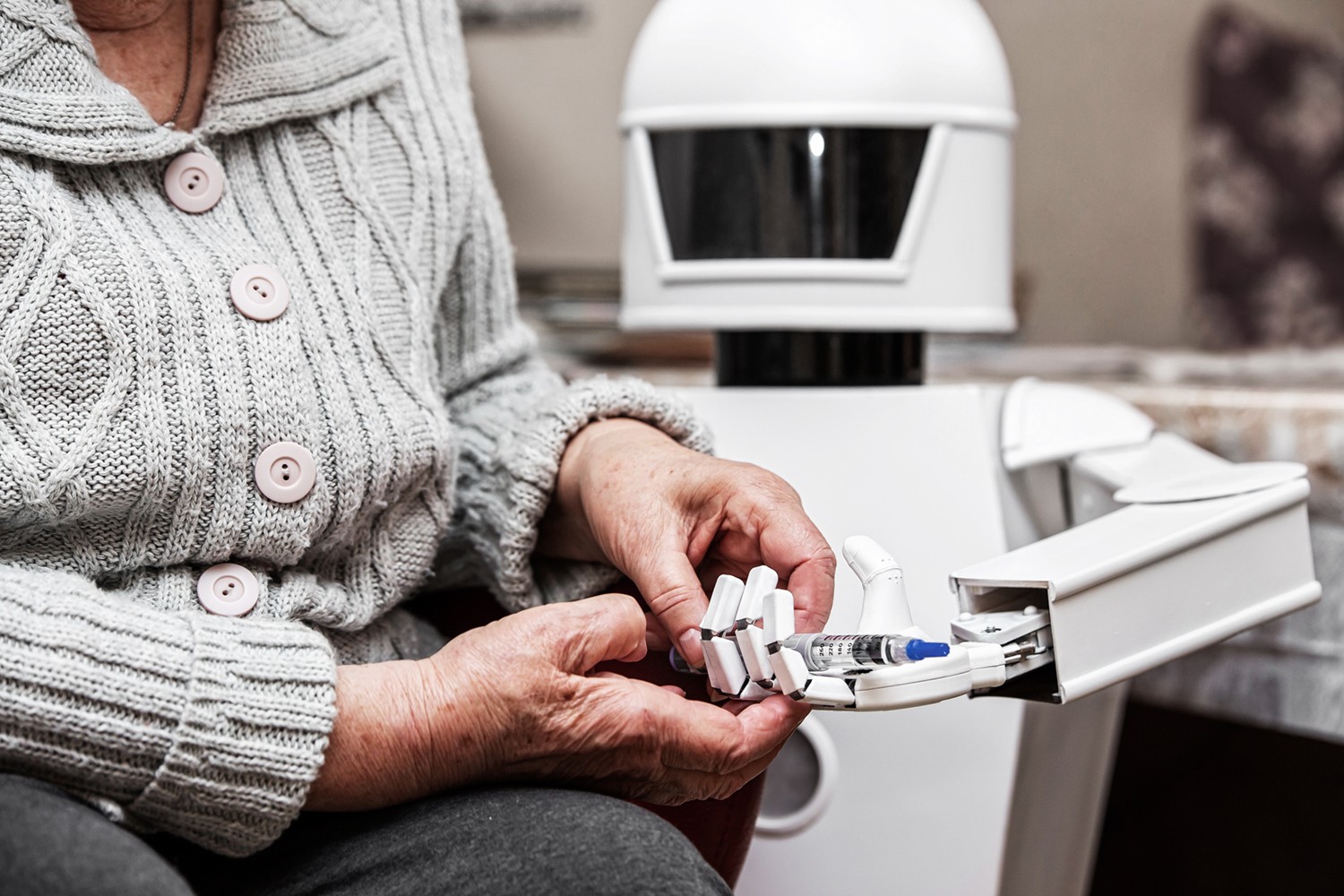The Advantages of Carebots

Elderly care remains a growing concern as the world population continues to rise. Carebots could be the transformative solution to the global shortage of caregivers.
A growing world population warrants additional caregivers for dependents, which remains unfulfilled due to various challenges such as physical demands and the risks of injuries, along with the lack of a universal minimum wage.
The crisis seeks intervention in the world of robotics. Engineers have come up with specialized models known as Carebots to reduce the gap of caregivers in society.
Understanding Carebots
Carebots are an emerging breed of robotics catered to the specialized care of the elderly and individuals who face cognitive or social decline. These robots provide myriad functions, including setting medicine reminders, guiding individuals to the bathroom, and contacting loved ones in the case of an emergency.
The close human contact of Carebots has led to a rise in consumer safety concerns. ISO, the international standard-setting body, recently added a new standard that enforces the safety of personal robots -ISO 13482:2014. Under the new standard, personal care robots undergo strict quality checks that validate the safety of human-robot physical contact applications.
While Carebots remain a developing technology that requires further advancement, it might see mainstream use in countries that face aging population issues, such as Japan, Singapore, and Italy. The recent pandemic may raise additional concerns over elderly care (due to their vulnerability to illnesses and infections) and prompt more significant investment in Carebot research and development.
Rising Use of Carebots
Japan is the country with the highest percentage of elderly, with 28.2% of its population aged 65 years and above. The Japanese government spends a quarter of its annual budget on the development of senior-friendly technology, which included carebot research in recent years. Subsidies and grants are offered to local Japanese research institutions and universities to improve current Carebot technology as research show that 1 in 3 Japanese will be aged 65 or over by 2030.
Notable Carebots
“Carebots” is a general term for robots that offer specialized care services. These advanced machines vary through specific functions. There are three main categories of carebots: physical assistant robots, mobile servant robots, and person carrier robots.
ASIMO -The Most Humanoid Robot
Honda’s ASIMO features a sophisticated design, enabling it to walk with human-motion and detect objects within its immediate environment. The advanced humanoid machine oversees the safety and care of individuals who require assistance. According to the official ASIMO site, the robot serves as another set of eyes, ears, hands, and legs for all kinds of people in need.
GeckoSystems Carebot - Advanced Navigation
Georgia-based technology company GeckoSystems provides a range of advanced Carebots (mobile service robots) equipped with in-depth motion sensors. Founders of the company drew inspiration from the common gecko, which are quick and friendly solutions to pesky (targeting flies and similar insects) situations. GeckoSystems’ machines serve a similar function as an agile solution provider and a welcoming sight for seniors. GeckoSystems bots’s navigation systems have been trial-tested in mock conditions that resemble highly cluttered home environments, with highly responsive results.
The Carebots feature self-navigating capabilities between preset points within a home environment. Sample routes include paths from the bedrooms to medicine cabinets and living room to adjoining bathrooms.
Carebots - An Upcoming Trend in America
America faces a smaller aging population than nations such as Japan and Italy, but healthcare providers consider the rising importance of Carebots. While most carebots assist the elderly, they may also cater to the needs of other dependent groups, such as children with autism spectrum disorders (ASDs).
Kaspar, a Carebot designed by a team at the University of Hertfordshire, responds to tactile interactions (skin contact), which supports autism treatments by serving as a safe and predictable learning tool for communication and social interactions. Kaspar is the product of intensive research from the Robot House in the University of Hertfordshire. University researchers formed data by observing and evaluating robotic solutions through natural environments that mimic the living conditions of the elderly.
Another example of these “living labs” can be found in the Bristol Robotics Lab (BRL). The facility’s replica apartment mirrors the layouts of most single-story homes, featuring a dining room, living room, bedroom, and connected bathroom. The lab contains a network of wireless sensors that feeds the experimenters’ responses to a smart home hub where it is locally and remotely assessed.
Data from the BRL serves to improve robotic solutions through a participatory approach that studies and understands specific caregiving needs to respond with intuitive functions. The deployment of Carebots is perhaps most effective in physical scenarios, where the elderly is likely to prefer the private company of a non-human companion - such as trips to the toilet or shower.
While the need for additional caregivers remains the primary solution, Carebots will undoubtedly play a significant role in fulfilling the burgeoning demands of elderly care. The question is, how will society adapt to the mobilized landscape? Let us know your thoughts in the comments section below.
_____________________________________________________________________________________________________________
Sources:
-
Robots and robotic devices — Safety requirements for personal care robots (https://www.iso.org/standard/53820.html)
-
Population Reference Bureau - “Countries with the oldest populations in the world.”March 23, 2020 (https://www.prb.org/countries-with-the-oldest-populations/)
-
Simran Walia, the Japan Times, “The economic challenge of Japan’s aging crisis, Nov 19, 2019 (https://www.japantimes.co.jp/opinion/2019/11/19/commentary/japan-commentary/economic-challenge-japans-aging-crisis/#:~:text=By%202030%2C%20one%20in%20every,structures%20in%20the%20postwar%20period.)
-
Asimo, innovations, "Advancing Human Mobility"(https://asimo.honda.com/innovations/)
-
GeckoSystems Mission Statement, “ Why ‘GeckoSystems?’”(https://www.geckosystems.com/about_us.php)
-
University of Hertfordshire, “Kaspar the Robot”,(https://www.herts.ac.uk/kaspar/the-social-robot)
-
UH Robot House, “Robot House Home to Human-Robot Interaction” (https://robothouse.herts.ac.uk/#:~:text=The%20Robot%20House%20is%20a,facility%20for%20human%2Drobot%20interaction.)
-
Prof. Praminda Caleb-Solly, Bristol Robotics Lab “Our Research”(https://www.bristolroboticslab.com/assistive-robotics)
Thanks for helping to keep our community civil!
This post is an advertisement, or vandalism. It is not useful or relevant to the current topic.
You flagged this as spam. Undo flag.Flag Post


